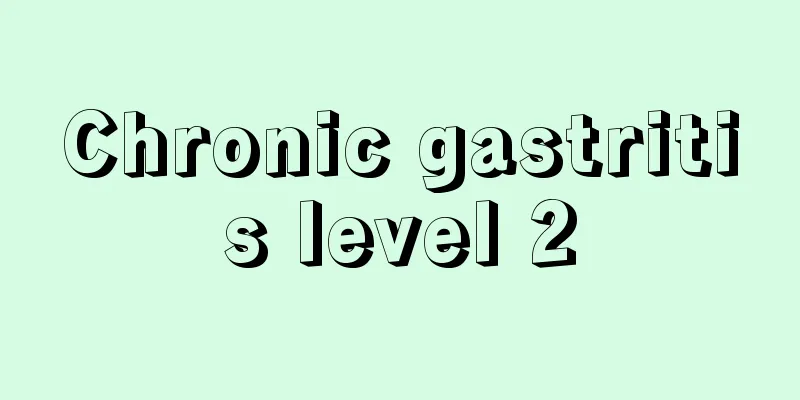Chronic gastritis level 2

|
Many people nowadays have disordered lifestyles, irregular diets, and do not pay attention to nutritional balance, which can easily lead to gastrointestinal diseases. If you feel stomach pain, you need to go to the hospital for examination and treatment in time, and then adjust and treat yourself according to the doctor's instructions, and try to resume a normal routine. What if the examination shows that you have chronic gastritis level 2? It's a bit serious. If you have a bad stomach, you should pay attention to your diet on a daily basis, eat regularly, don't overeat, maintain a normal work and rest schedule, and eat some stomach-nourishing and stomach-strengthening foods for conditioning. Chronic gastritis refers to various chronic inflammatory lesions of the gastric mucosa caused by different causes. It is a common disease and its incidence ranks first among various stomach diseases. Since the widespread use of fiber endoscopy, the understanding of this disease has been significantly improved. Common examples include chronic superficial gastritis, chronic erosive gastritis and chronic atrophic gastritis. The latter is intestinal metaplasia of the mucosa, often involving the cardia, accompanied by loss of G cells and decreased gastrin secretion, and can also involve the body of the stomach, accompanied by loss of acid-secreting glands, leading to a decrease in gastric acid, pepsin and intrinsic factor. Chronic gastritis lacks specific symptoms, and the severity of the symptoms is not consistent with the degree of gastric mucosal lesions. Most patients are often asymptomatic or have varying degrees of indigestion symptoms such as upper abdominal pain, loss of appetite, fullness after meals, acid reflux, etc. Patients with chronic atrophic gastritis may have anemia, weight loss, glossitis, diarrhea, etc. Some patients with mucosal erosion have obvious upper abdominal pain and may have bleeding, such as vomiting blood and black stools. Symptoms often recur, with irregular abdominal pain. The pain often occurs during or after meals and is mostly located in the upper abdomen, around the navel, and in some patients the location is not fixed. Mild cases have intermittent dull pain or pain, while severe cases have severe colic. |
<<: What bacteria are beneficial to humans
>>: The harm and benefits of bacteria and fungi
Recommend
How to correct a protruding front tooth
A protruding front tooth is actually a buck tooth...
What to do if your eyes are dry and uncomfortable
There are many reasons for dry and uncomfortable ...
Causes of spleen distension and pain
Spleen distension and pain may be caused by kidne...
How to remove oil stains from white clothes
When the weather gets warmer, white clothes are l...
What should you pay attention to when you have premature heart beats? Beware of these complications!
Premature beats can cause the heart to beat irreg...
The 7 major hazards of liver cancer are not alarmist
Liver cancer is a common malignant tumor. Its mor...
How many days does targeted breast cancer treatment usually require hospitalization?
The specific number of days of hospitalization fo...
What are the latest treatments for nasopharyngeal carcinoma?
What is the latest treatment for nasopharyngeal c...
What causes knee bone spurs?
The feeling of bone spurs in the knee joint is ve...
How to check sperm survival rate?
Every man hopes that his sperm survival rate is a...
What are the methods of making tea
Tea is a 5,000-year-old Chinese culture and somet...
What are the symptoms of lumbar muscle injury?
When the lumbar muscles are injured, it is actual...
What should I do if my foot is swollen after being hit by something
Any part of the body is very important to us. For...
What are the allergic reactions?
Many people in life suffer from allergies. These ...
Is physiological weight loss normal?
The physical development of children is a matter ...









